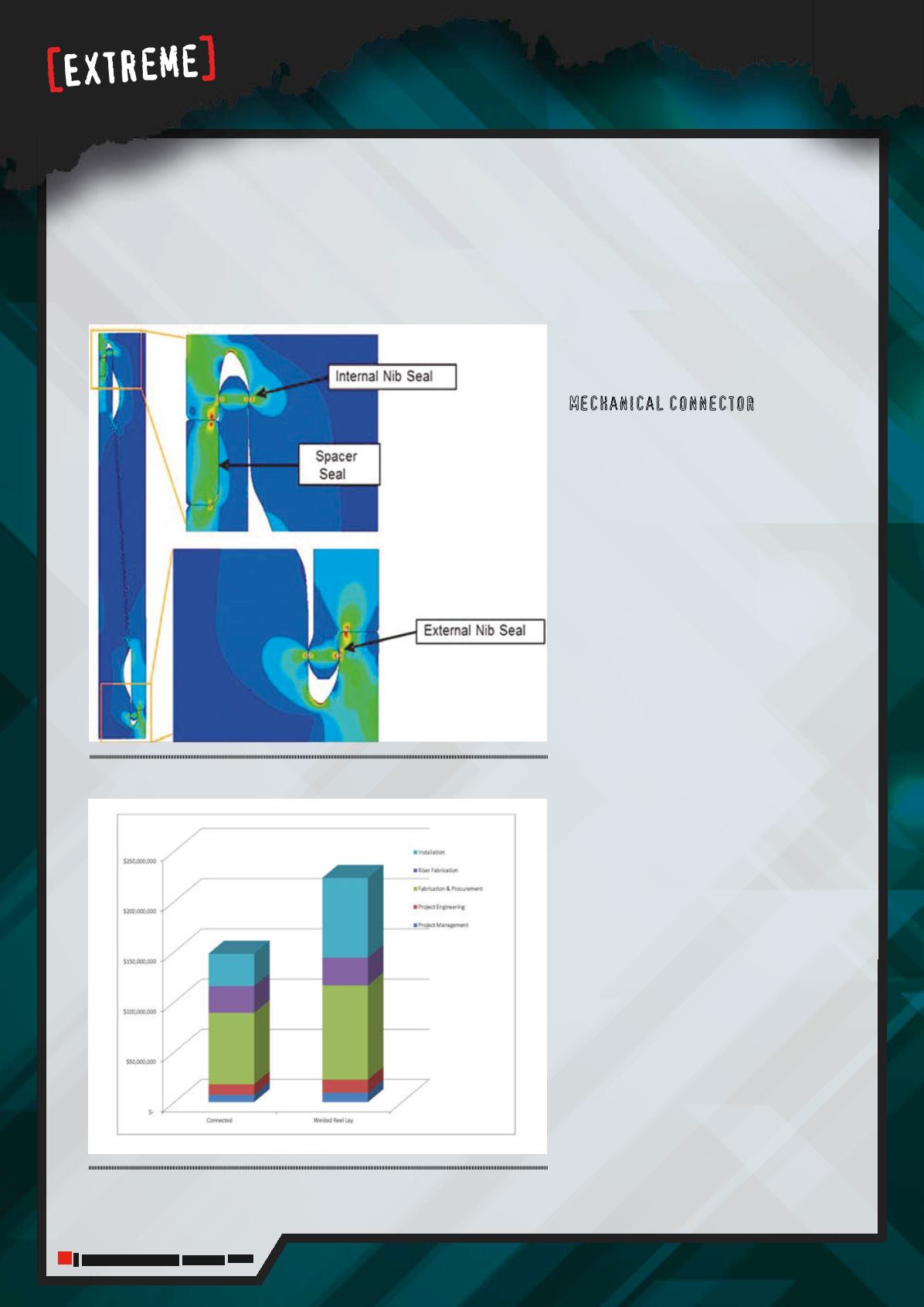
68
|
Oilfield Technology
January
2016
Other opportunities for ICP exist in pipe-in-pipe, TLP and
hybrid riser tower tendons, drilling risers, conductor and
subsea jewellery applications to name a few.
A feature of the solution is the fabrication process,
where the pipe joining happens off the critical path in a
controlled onshore environment. This assures a high degree
of consistency in the joining process and produces joints
with high fatigue resistance. The insulation coatings and
corrosion resistant alloy (CRA) cladding of the joints for
offshore installation can also be customised per project
requirements. The ICP solution also enables
operators to include more local content in the
manufacture and installation of the risers and
flowlines.
Mechanical connector
The mechanical connector is the enabling
technology behind ICP. The connector is an
axially made-up pin and box type connector
designed to meet the requirements of
ISO 13628 (petroleum and natural gas
industries design and operation of subsea
production systems) and API 2RD (dynamic
risers for floating production systems) and
is fully qualified to the testing requirements
per ISO 21329 (mechanical connectors for
use in pipeline transportation systems for the
petroleum and natural gas industries). The
connector provides a high strength, fatigue
resistant connection that can be quickly
and reliably made up offshore. The riser
and pipeline connector has made numerous
improvements in advancing the application
of connected solutions to dynamic risers and
pipelines.
Redundant sealing mechanism: Three
separate seals are incorporated into the
design including an internal metal to
metal ‘spacer’ seal, an internal metal to
metal ‘nib’ seal, and an external metal to
metal ‘nib’ seal. Figure 3 illustrates the
three sealing locations and the metal to
metal contact areas that comprise the
connector sealing mechanism.
Corrosive service compatible: The
connector has pre-loaded ID and
OD shoulders which prevents any
possibility of crevice corrosion or
‘leak’ path. In corrosive environment
applications the internal spacer ring is
manufactured from CRA material and
the connector ID can be CRA clad, which
ensures continuous corrosion resistant
cladding throughout the pipe bore.
Fatigue resistance: The highly fatigue
resistant properties of this connector
make it well suited for dynamic
applications such as steel catenary
risers (SCRs). Extensive fatigue testing
Figure 3.
GMC connector seals.
Figure 4.
Riser cost comparison - three risers in 2300m.


